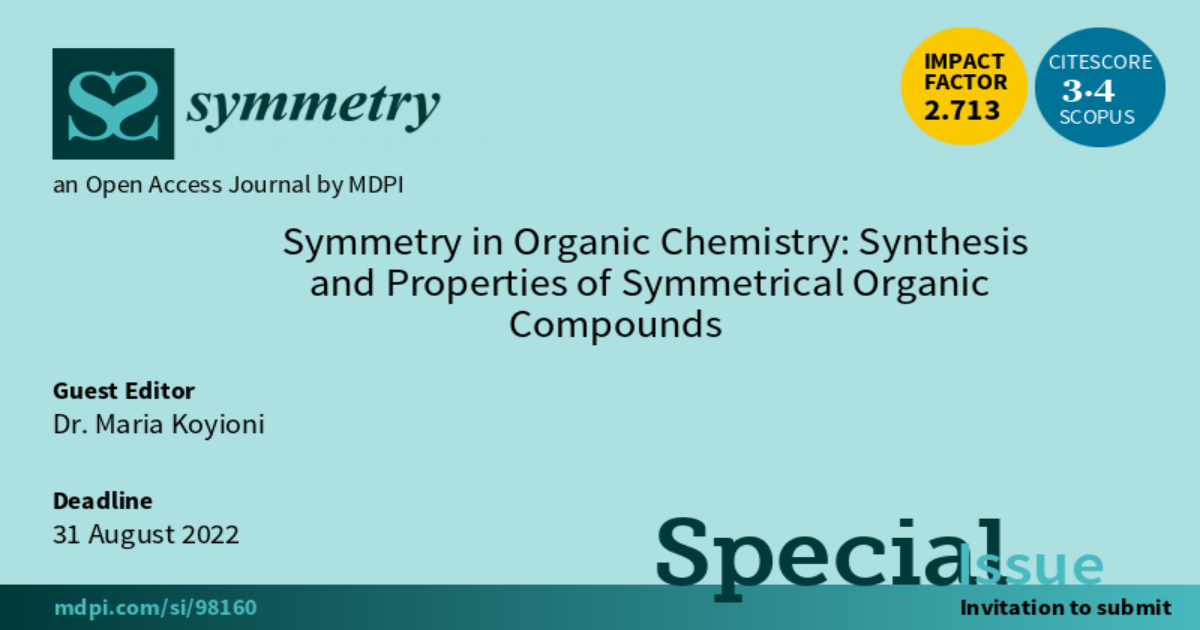Symmetry in Organic Chemistry: Synthesis and Properties of Symmetrical Organic Compounds
A special issue of Symmetry (ISSN 2073-8994). This special issue belongs to the section "Chemistry: Symmetry/Asymmetry".
Deadline for manuscript submissions: closed (31 August 2023) | Viewed by 1470

Special Issue Editor
Special Issue Information
Dear Colleagues,
Symmetry is a fundamental concept in sciences. In chemistry, symmetry can be found everywhere, including at the atomic, molecular, and supramolecular level. It is used in molecular spectroscopy, X-ray crystallography, in the mechanistic interpretation of chemical reactions, and other processes.
From the standpoint of synthetic organic chemists, symmetrical molecules (organic compounds with a plane, center, or alternating axis of symmetry) play a pivotal role in the development of new materials. Porphyrins, prophyrazines and phthalocyanines, extended acenes and heteroacenes, dimeric and oligomeric (hetero)cyclic compounds, BODIPYs, fullerenes, dendrimers, and metal–organic complexes/frameworks, to name but few, are symmetrical compounds which have outstanding properties and find applications in diverse areas, both in materials and pharmaceutical sciences.
This Special Issue is dedicated on the synthesis and/or properties of such symmetrical organic molecules and we invite you to submit your contributions.
Dr. Maria Koyioni
Guest Editor
Manuscript Submission Information
Manuscripts should be submitted online at www.mdpi.com by registering and logging in to this website. Once you are registered, click here to go to the submission form. Manuscripts can be submitted until the deadline. All submissions that pass pre-check are peer-reviewed. Accepted papers will be published continuously in the journal (as soon as accepted) and will be listed together on the special issue website. Research articles, review articles as well as short communications are invited. For planned papers, a title and short abstract (about 100 words) can be sent to the Editorial Office for announcement on this website.
Submitted manuscripts should not have been published previously, nor be under consideration for publication elsewhere (except conference proceedings papers). All manuscripts are thoroughly refereed through a single-blind peer-review process. A guide for authors and other relevant information for submission of manuscripts is available on the Instructions for Authors page. Symmetry is an international peer-reviewed open access monthly journal published by MDPI.
Please visit the Instructions for Authors page before submitting a manuscript. The Article Processing Charge (APC) for publication in this open access journal is 2400 CHF (Swiss Francs). Submitted papers should be well formatted and use good English. Authors may use MDPI's English editing service prior to publication or during author revisions.
Keywords
- molecular symmetry
- plane of symmetry
- organic compounds
- organic synthesis
- dimers
- trimers
- tetramers
- heterocycles
- complexes
- supramolecular





